|
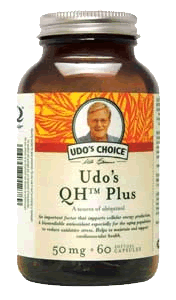
What is QH?
QH is a highly active form of Coenzyme Q10. Specifically, QH is the high energy, antioxidant form of Coenzyme Q10. QH has great advantages over Q10 for athletes, for people over 40, for people with cardiovascular, neurodegenerative, and diabetic diseases, and for anyone of any age who is under oxidative stress. Who is under oxidative stress? These days, it’s just about everybody.
Can you put Q10 and QH into context?
First: Coenzyme Q10 and QH are a tag team cycle in energy production within the energy factories (furnaces, mitochondria) of our cells. That’s where 90-95% of the energy (ATP) for every cell in our body—and especially important in the heart, muscle, brain, immune, and intestinal cells—is made.
Both coenzyme Q10 and QH are part of the electron transport chain—the molecular mechanism responsible for energy (ATP) production. Q10 is the oxidized (spent) form. QH is the reduced (high energy) form.
Second: QH is one of the most powerful oil-soluble antioxidants in the human body. It can prevent damage done to the energy factories in our cells. While both Q10 and QH are important in energy production, only QH can act as an antioxidant.
Why do we need QH?
When we are young, the body’s ability to make and re-charge QH is high. At age 20, the ratio of QH to Q10 is 80 to 20. But this ability decreases with age, and the QH to Q10 ratio declines as we age. By the time we are 40, the ability to re-charge Q10 into QH has declined considerably. Since QH is important in energy production, this means that our energy level deteriorates as the ratio of QH to Q10 goes down with age.
At this point, supplementation with QH becomes useful.
What form does QH come in?
QH comes in capsules.
It is carried in Udo’s Oil 3,6,9-Oil Blend.
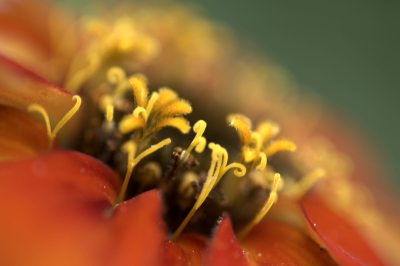 How is QH different from Q10? How is QH different from Q10?
Both QH and Q10 are necessary for energy production, but only QH has antioxidant, free radical-scavenging, damage-preventing, age-slowing properties. Also, QH is far more effectively (2 to 8 times, depending on dose) absorbed into our body. QH is several times more effective in reversing oxidative stress. QH can slow down free radical-induced aging.
It sounds complicated. Is there a simpler way to understand QH?

Let me try.
In terms of antioxidant activity:
- QH is like a fresh plant. Q10 is like a cooked plant.
- QH is like a sun-charged whole food. Q10 is like a stored, tired, wilted food that has lost its charge.
- QH is like a fresh, crunchy, juicy carrot. Q10 is like an old, limp, dehydrated carrot.
- QH is like a high-energy oil blend. Q10 is like low-energy, used oil.
- QH is like youth. Q10 is like age.
- QH is alert and active. Q10 is tired and spent.
- QH is the more organized form. Q10 is the less organized (disorganized) form.
- QH gives energy to the body. Q10 takes energy from the body to be converted back into QH.
- QH is basic (or alkaline) in comparison to Q10, which is relatively more acidic. Our body constantly takes in alkaline and gets rid of acidic molecules.
- QH is more like plant energy, and Q10 is more like animal energy. Plants buy (store) sunlight energy. They do this through photosynthesis, which involves capturing hydrogen and releasing oxygen. Oxygen is alkaline. Oxygen, which is our breath, is essential for us. Animals and human beings spend (release) sunlight energy. They do this through respiration, which involves the burning (oxidation) of molecules into water and carbon dioxide. Carbon dioxide is acidic. Carbon dioxide uses up oxygen. Carbon dioxide also produces climate change and global warming
What does QH do in the body?
- Along with Q10, QH maintains and supports cardiovascular health
- Along with Q10, QH fuels cellular energy (ATP) production
- Unlike Q10, QH functions as a powerful, fat-soluble antioxidant, acting as a protector from free-radical damage and aging, especially in the brain, heart and muscle cells
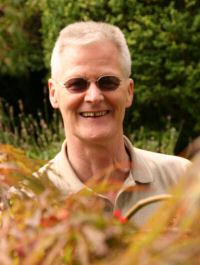 What are the advantages of using QH
that you don’t get from CoQ10?
By providing the charged (rather than spent) member of the energy tag team, QH makes energy production in our cells more efficient. As we know, energy is everything. Energy is life. In addition, QH gives us antioxidant protection—that’s one thing that Q10 cannot do. QH is at the fresh, high-energy end. As people get older they get oxidized, slow down, and lose energy. QH increases energy and increases protection at the same time. That makes QH a superb addition to any health program.
What do you mean when you say: “oxidized”?
Oxidation is the process that causes iron to rust: oxygen reacts with iron, the iron rusts, and our pot gets a hole in it. The same thing happens with molecules in the body. Oxidation sets people up for aging. It is a form of decay. One way to prevent oxidation is to introduce reduced molecules like QH to prevent oxidative decay in our body.
What makes QH unique?
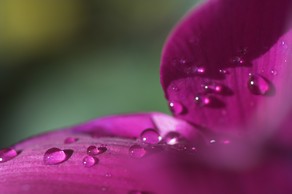 There are hundreds of antioxidants. There are hundreds of antioxidants. All have their own unique roles. Some, like vitamin C, are water-soluble. Others, like vitamin D, are fat-soluble. QH is a fat-soluble antioxidant that prevents free-radical damage in the brain, muscle, heart, and all cells. QH prevents damage to cell membranes. QH prevents damage to the energy productions system (mitochondria) in our cells. QH is able to do work that other antioxidants (like bioflavonoids and vitamin E) cannot do. Without enough QH in the body, oxidative effects can speed aging and can lead to degenerative diseases.
Do we need both (CoQ10 and QH) or is QH enough?
The body uses both forms—but we’re okay with just supplementing with QH. That’s because our bodies easily oxidizes QH into CoQ10. But getting our body to convert CoQ10 to QH is tricky—it gets harder as we get older.
Why would somebody take QH over CoQ10?
QH is already in a high-energy form. Unlike CoQ10, QH doesn’t require any extra energy from the body to utilize it. QH is also easier to absorb into our body. QH helps keep us younger. Without QH, our energy systems runs down and gets oxidized as we get older. That’s the nature of aging.
Why is that?
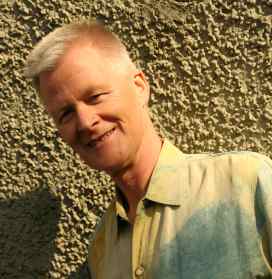
Like a house, our body is an amazing, complex, beautiful organization. Without energy input, organizations naturally and gradually get disorganized. If we build a house, but decide not to do any maintenance, what happens? Shingles break, our roof begins to leak, and drainpipes get clogged with dead leaves. Our house has become disorganized. Our quality of life goes down. In the same way as we need to spend energy to fix our roof and clean the drainpipes, our body has to spend energy to turn CoQ10 into the more highly organized QH.
Who should be taking QH (rather than Q10)?
- Anybody over the age of 40
- People with degenerative diseases
- Anyone under oxidative stress
- Athletes
Is QH safe?
Completely. QH has undergone 10 years of research regarding its safety.
What does the research say?
QH / Q10 ratios in blood plasma have been shown to be lower than normal in people with cardiovascular, neurological, liver-related, and diabetes related conditions. Interesting research is being done on heart failure. Patients taking CoQ10 have been compared to patients taking QH. 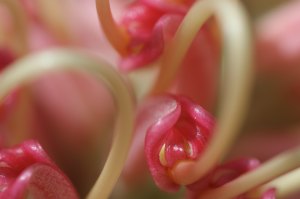 QH is much more effective than CoQ10 at improving the ability of the heart to recover its blood pumping function. QH is much more effective than CoQ10 at improving the ability of the heart to recover its blood pumping function.
There are impressive case studies. Full clinical trials on cardiovascular disease have been completed and are awaiting publication in peer-reviewed journals. Trials on diabetes and on neurodegenerative diseases like Huntington’s, Parkinson’s, and ALS are in progress. Supplementing with QH provides effective antioxidant defense in these conditions and increase levels of stamina, energy, and wellbeing. The most impressive visual research was done in mice. I got to see a short video of it. Both mice were the same age. The CoQ10 mouse looked old, hardly moved, looked scraggly and tired. The QH mouse was active, animated, and had lots of energy.
The difference was more than just remarkable. It was astonishing. Although the QH mouse did not live longer than the CoQ10 mouse, its quality of life was remarkably improved by QH. Since it can provide far higher quality of life during aging, QH is a huge winner.
Why is QH combined with Udo’s Oil™?
QH is oil soluble. It is best carried into the body in oil. Different companies use different carriers. Some use industrial, damaged, low quality oils. We thought: Why would we take a superb product (QH) and put it into an oil carrier containing molecules that can work against health?
We decided to put the QH top product into a top quality carrier—Udo’s fresh, organic, unrefined, undamaged oil that was made with health in mind.
Is QH prevention or cure?
It’s more than that. Since we now know that our QH levels decrease as we age, why would we want to wait until we are sick and in pain? QH is part of pursuing health, rather than merely suppressing symptoms or preventing disease.
How much QH should we take?
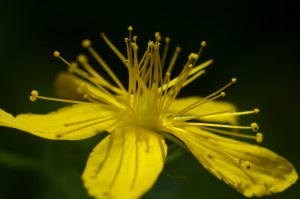 The recommended amount is 100 to 300mg per day The recommended amount is 100 to 300mg per day for two weeks to load the body. After that, 50 to 100mg per day are recommended for maintenance. Degenerative conditions may improve faster if more is given. Although 2,400mg have been given daily without side effects, 350 to 600mg are the usual doses used in studies of degenerative disease studies and in their treatment. QH can be taken with foods, but is easily absorbed provided that it is carried in good oils. What is your view on pain?
Pain is one major way that life uses to get our attention. Pain tells us to set higher standards. Pain tells us to eat better, or breathe deeper, or avoid running into hard objects, or fall off high places with sudden stops at the bottom.
Pain tells us to change something that’s not working for us. Instead of running from the stick of pain and disease, we could be chasing the carrot of joy and health. QH is part of my program for chasing health so I can enjoy being healthy. I prefer to be motivated by the carrot of health, rather than by the stick of pain. Chasing carrots is a better ride than avoiding sticks.
What are 4 things you do in your program to pursue health?

- One: I respond to the pain in my heart by a practice that helps me get closer to it. Heart’s pain can be transformed into heartfelt joy.
- Two: I respond to the pain in my body by eating fresh, whole, raw and organic foods, avoiding damaged foods and industrial poisons, making sure that my digestion is working optimally, and making sure I don’t wreck my body by misusing it.
- Three: I respond to mental and emotional pain by thinking more in terms of ‘us’ rather than ‘us and them’. In truth, there’s only “us” on this planet. Serving life rather than beliefs is powerfully effective for turning mental and emotional pain into satisfaction based on contributing. What each of us does affects the entire planet. Everything on this planet gets better if we give a little more of our heart to all of it.
- Four: I breathe deep and stay active. I run around in fresh air for the sheer fun of it, smell the roses, and while doing so, take macro photographs that capture the exquisite beauty and symmetry of nature. You can see a few of my photos on my web site at https://rustydogg.com/sites/udoerasmus.com/ .
- Five: I respond to environmental pain by focusing my energy on support for green plants, water, and reduced use of coal, oil, gas, other petrochemicals, and bio-fuels. I support water-based energy production over all other forms, because water does not produce carbon dioxide and supports green plants that make the oxygen we breathe. No other form of energy production does both.

|